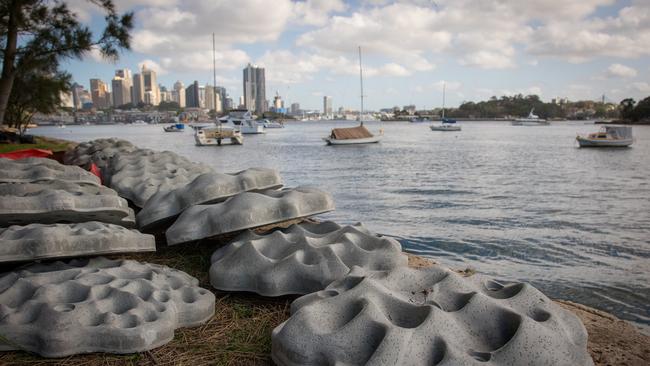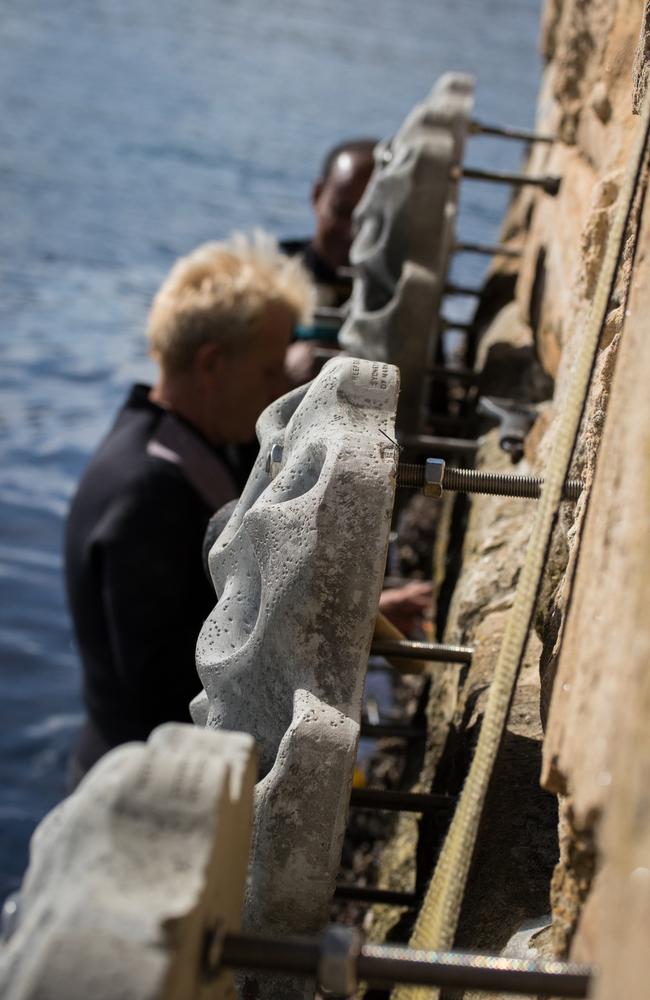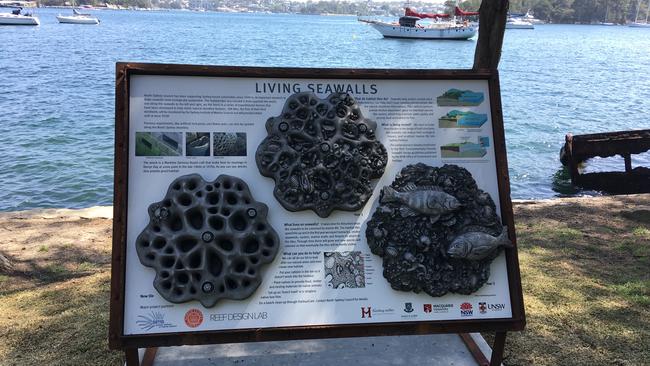Living seawall at North Sydney is rebuilding Sydney’s marine life
The harbour in North Sydney has been transformed into one of the world’s largest living seawalls — which consists of fifty 3D-printed tiles that have been designed to mimic the root structure of mangrove trees — in an attempt to counteract the urban destruction of the coastline.

THE harbour at Milsons Point has been transformed into one of the world’s largest living seawalls, in an attempt to counteract the urban destruction of the coastline.
Over the last 200 years more than half of Sydney’s vibrant marine habitats along the harbour foreshore have been replaced with man-made seawalls. This has caused significant threat to many of the marine wildlife that call the harbour home.
In an effort to curb this trend, the Sydney Institute of Marine science has partnered with car manufacture company Volvo to spearhead a project aimed at restoring the natural habitats in the harbour.

The project involves the instillation of a living seawall, which consists of fifty 3D-printed tiles that have been designed to mimic the root structure of mangrove trees.
North Sydney mayor Jilly Gibson said she is proud of council’s involvement in the project and the initiative taken by the whole project team.
“These new habitat tiles on our seawalls have the potential to help rejuvenate Sydney Harbour by bringing more marine life back into our waters,” Mayor Gibson said.
“I hope to see other harbourside councils follow our lead in supporting initiatives that have huge environmental benefits for our waterways.”
Each tile features tiny nooks and crannies that give marine life a place to live and hide, just as they would in a natural mangrove ecosystem.

The aim of the project is to further understand the habits of marine life and thus increase their survival. SIMS research associate and one of the project managers of the seawall project, Maria Vozzo, is confident that the goals will be achieved.
“What these tiles do is actually retain water, so it makes them a much more inhabitable for these species,” Ms. Vozzo told the Mosman Daily.
“The ultimate goal is to raise awareness that this is an issue in Sydney Harbour and we can really be creative in how we solve this problem going forward.”

The seawall at Milsons Point is the first of several planned Seawalls around Sydney Harbour and it is hoped that other harbours around Australia and the globe will soon look at undertaking similar projects. Nick Connor, Managing Director of Volvo Car Australia, said the message is simple, maintaining natural marine habitats has to be the key.
“We’ve lost 50 per cent of the world’s mangrove forests, and in their place, we’ve built things like seawalls, which proliferate around Sydney Harbour. Tearing down the natural seawalls is not viable,” Mr. Connor said.
“There’s a Swedish word, omtanke, which means ‘caring’ and ‘consideration’. I think that really captures what we’re trying to achieve with the Living Seawall, and it sums up Volvo’s approach to sustainability in general.”


